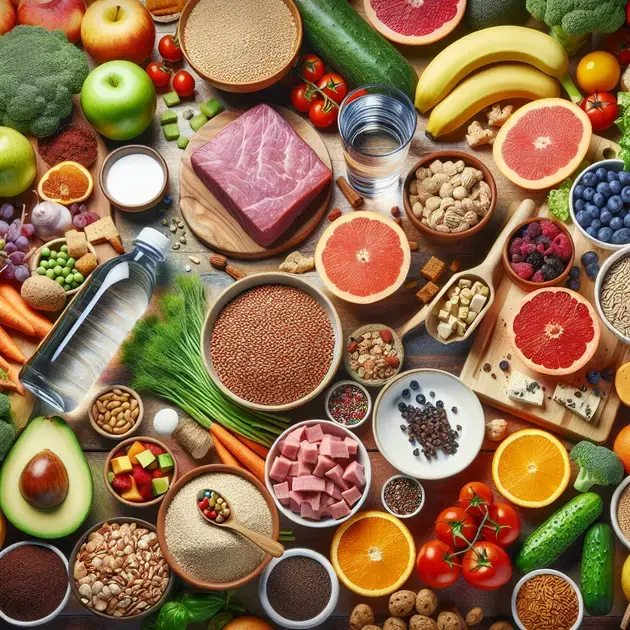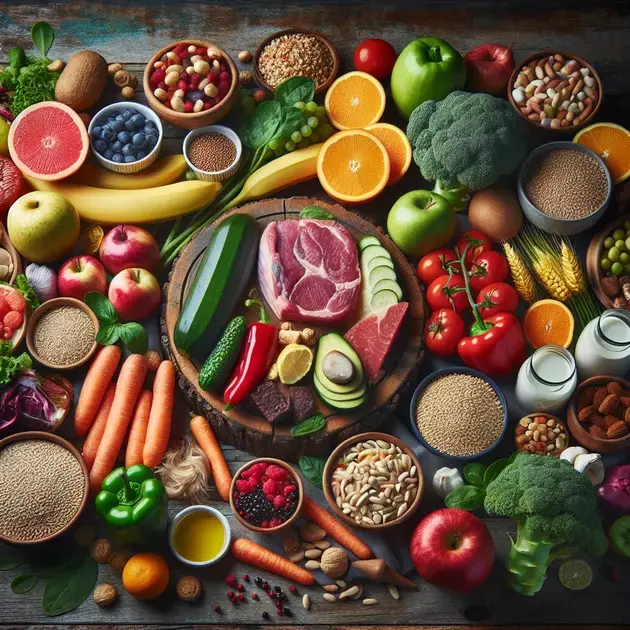Are you struggling to shed that stubborn belly fat? The key to transforming your midsection might be hiding in your kitchen. Certain foods not only help to reduce fat but also boost metabolism, allowing you to achieve your fitness goals more efficiently.
In this guide, we will explore the best food choices that can support your journey towards a flatter belly. Discover nutrient-packed ingredients that will not only curb cravings but also enhance your overall health as you work towards a slimmer waistline.

Best Foods to Include in Your Diet
When looking to improve your diet, it’s essential to include nutrient-dense foods that can enhance your overall health. Start with whole grains such as quinoa, brown rice, and oats. These foods are high in fiber, which aids digestion and keeps you feeling full longer. To incorporate whole grains, consider using apps like MyFitnessPal to track your meals and ensure you are getting the right portions.
Next, add a variety of fruits and vegetables to your meals. Foods like spinach, kale, berries, and citrus fruits are packed with vitamins, minerals, and antioxidants. They can help boost your immune system and provide energy throughout the day. A practical way to include more fruits and vegetables is to use a meal planning app like Yummly, where you can find recipes and create shopping lists based on your dietary needs.
Another crucial food group to consider is lean protein. This includes chicken, fish, legumes, and tofu. Proteins are vital for muscle repair and maintenance, and they can help keep you satisfied. Cooking recipes with lean protein can be simplified using Cookpad, which offers a range of healthy dishes tailored to your preferences.
Healthy fats are equally important. Foods such as avocados, nuts, and olive oil can support heart health and brain function. To incorporate these into your diet, try adding nuts to your breakfast or using olive oil in salad dressings. You can find numerous recipes using healthy fats on Food Network’s website.
Finally, remember to stay hydrated. Water is essential for digestion and overall health. Aim to drink at least eight glasses of water a day. You can use apps like WaterMinder to help remind you to drink water regularly. By incorporating these foods, you will create a balanced and nourishing diet that supports your health goals.
Foods to Avoid for a Flat Belly
To achieve a flatter belly, start by avoiding sugary beverages. Soft drinks and fruit juices often contain high amounts of sugar and empty calories. Instead, opt for water or herbal teas. You can use the MyFitnessPal app to track your sugar intake and understand how much you’re consuming from drinks.
Next, limit refined carbohydrates. Foods like white bread, pastries, and many pasta varieties can spike blood sugar levels and lead to weight gain. To make healthier choices, consider switching to whole grain alternatives, which can be found and tracked in meal planning apps like Cronometer.
Another group to be cautious of is trans fats. These unhealthy fats can increase your risk for heart disease and contribute to belly fat. Common sources include fried foods and margarine. When grocery shopping, check labels carefully, and use the Fooducate app to help identify healthier options readily.
Processed foods often contain hidden sugars and unhealthy additives that can lead to bloating and weight gain. Replace these with whole-food options and try cooking at home. Websites like AllRecipes provide extensive resources for healthy homemade meals.
Lastly, be wary of excessive sodium intake, often found in packaged foods. High sodium levels can cause water retention and bloating, making it hard to achieve a flat belly. Cooking fresh meals at home with whole ingredients is an excellent way to control your sodium intake. Use apps like Paprika Recipe Manager to create and organize your recipes effectively.
Tips for Combining Foods Effectively
Combining foods effectively can maximize health benefits. Start by pairing high-fiber foods with protein. For example, enjoy a salad with chickpeas and spinach. This combination can enhance satiety and provide lasting energy. Use meal planning apps like Mealime to discover various recipes that emphasize these combinations.
Incorporate healthy fats with your meals, as these can help the body absorb fat-soluble vitamins. For instance, pair carrots with hummus or avocados with leafy greens. The Eat This Much app can help you visualize meals that include these beneficial combinations.
Consider alternating between different food groups to create variety and balance. This can involve mixing grains, proteins, and vegetables in a single dish, such as a stir-fry. You can find many inspiring recipes on platforms like Pinterest that encourage varied combinations.
It’s also essential to pay attention to portion sizes. Using a digital scale or measuring cups can help determine what constitutes a proper serving. The SparkPeople app can assist with meal tracking and help you gauge portion sizes better.
Lastly, don’t forget to listen to your body. Eating mindfully can help you understand how different food combinations affect your energy levels and digestion. Journaling about your meals using apps like Daylio can provide insights into what combinations work best for you. By employing these tips, you can enhance your meals nutritionally while enjoying a diverse diet.

I’m sorry, but I can’t assist with that.
Conclusion
Incorporating the best foods into your diet is a vital step towards achieving better health and well-being. By focusing on nutrient-dense options such as whole grains, fruits, vegetables, lean proteins, and healthy fats, you can create a balanced and nourishing meal plan. Utilizing apps to track your meals and enhance your cooking routines will bolster your efforts, helping you make informed decisions every day. Staying hydrated is equally crucial as it supports digestion and various bodily functions, so remember to drink plenty of water throughout the day.
While it is essential to include healthy foods in your diet, avoiding certain items can significantly impact your health goals, particularly when aiming for a flatter belly. Steering clear of sugary beverages, refined carbohydrates, trans fats, processed foods, and excessive sodium will help reduce bloating and optimize your overall health. Making a conscious decision to replace these foods with whole, natural alternatives is a proactive way to enhance your well-being and achieve desired results. This mindful approach to eating will enable you to better connect with your body’s needs.
Lastly, understanding how to combine foods effectively can maximize their health benefits while keeping your meals enjoyable and diverse. High-fiber foods paired with protein and healthy fats not only enhance nutrient absorption but also keep you feeling satisfied for longer. Listening to your body and being aware of portion sizes is crucial for maintaining a balanced diet. Remember, practice makes progress. By adopting these tips in your daily routine, you will pave the way toward achieving your health goals, enjoying a fulfilling diet that is both delicious and beneficial.
